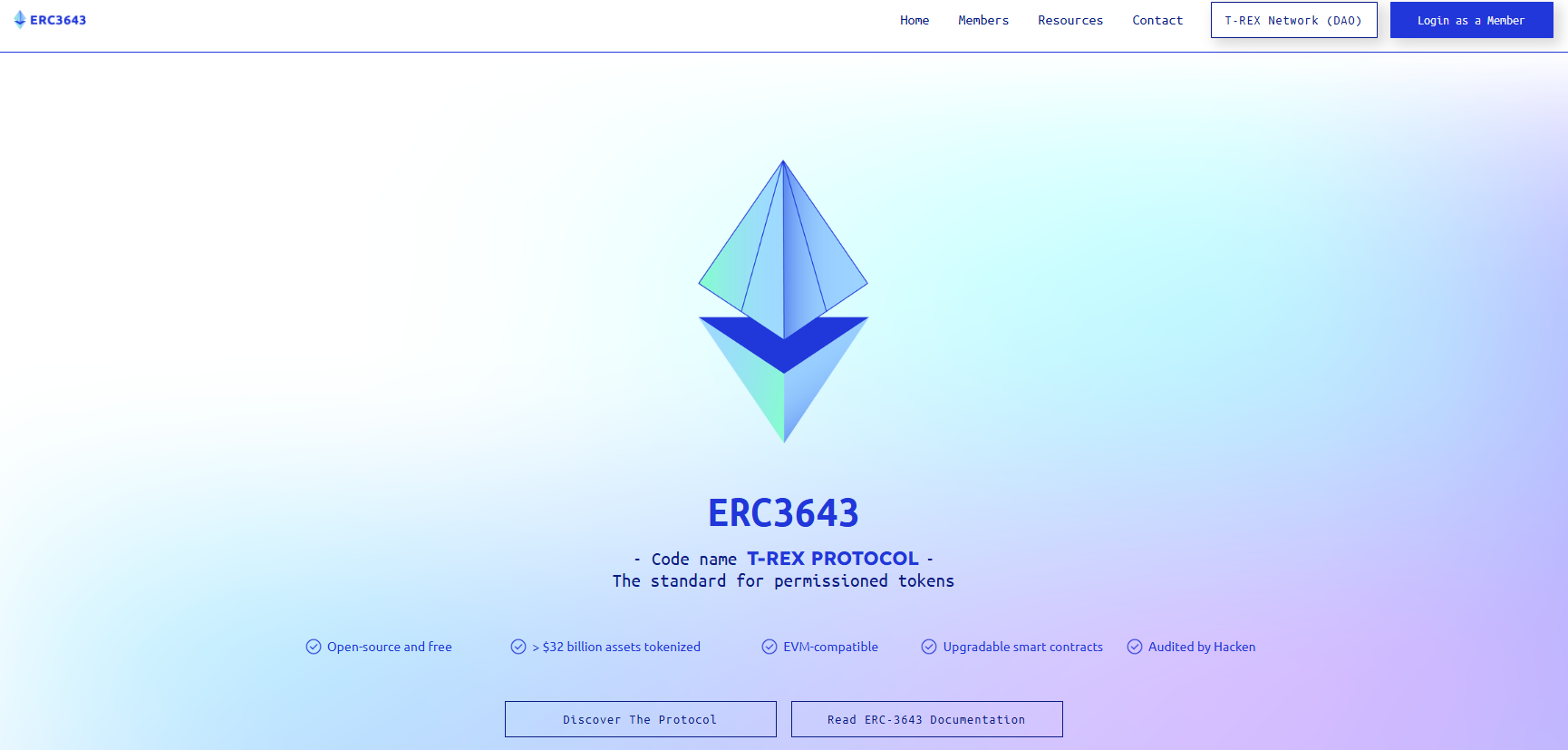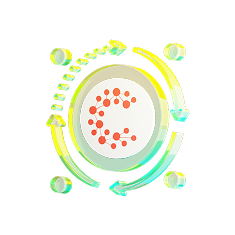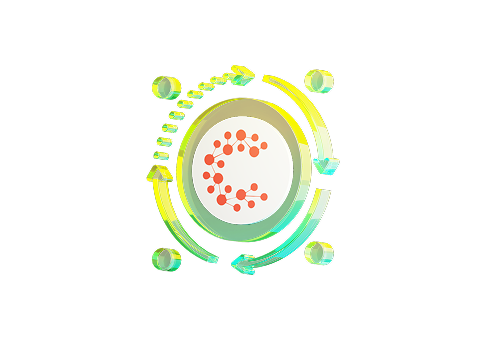What is Casper Network and How Does It Work
Casper Network is a layer-1 blockchain built for real-world business use. It runs on Proof-of-Stake consensus and uses WebAssembly (Wasm) for smart contracts. This means developers can write code in languages they already know like Rust, JavaScript, or C++. They don't need to learn new blockchain-specific languages.
The network handles both public and private data environments. Companies can tokenize assets and manage sensitive information while staying compliant with regulations. The blockchain remains permissionless and decentralized. Anyone can join the network as a validator or delegator.
CSPR is the native token that powers the entire ecosystem. Users pay transaction fees with CSPR. Validators stake CSPR to secure the network. The token has an inflationary model with a fixed annual growth rate. This design encourages active participation instead of hoarding. One CSPR equals one billion motes, which are the smallest units.
Review CSPR Price on LBank
CSPR() Price
The current price of
The Founder Behind Casper Network: Mrinal Manohar's Vision
Mrinal Manohar co-founded CasperLabs with Medha Parlikar in 2018 and serves as its CEO. His journey to blockchain started long before Casper. He earned a Master of Science in Computer Science from Carnegie Mellon University between 2006 and 2007. During his studies, he worked directly with the FBI on identity and cybersecurity projects. This early exposure to security challenges shaped his approach to building enterprise blockchain solutions.
Since 2010, Manohar has been an active angel investor in the crypto space. His portfolio includes early investments in Ethereum, Tezos (XTZ), Filecoin (FIL), and MakerDAO. These investments weren't random picks. Each project solved specific problems in the blockchain ecosystem. His experience watching these projects grow and face challenges informed Casper's design. He understood why enterprises hesitated to adopt blockchain and what barriers needed removal.
Manohar's vision for Casper reflects his belief in collaboration rather than competition. He stated: "We don't view it as blockchain vs the IBMs and the Microsofts not at all, its like hey we should be working together because you know what the enterprise requires, we understand distributed systems". This philosophy drives Casper's focus on enterprise integration and compliance. The network doesn't try to replace existing systems. Instead, it provides blockchain infrastructure that works alongside traditional enterprise technology.
The transition from CasperLabs to Prove AI AG in September 2025 marks a new chapter. While Manohar moves on to AI governance challenges, his foundational work on Casper continues through the community and Casper Association. The architecture he designed supports the network's evolution into regulated tokenization and beyond. His emphasis on upgradeable contracts and compliance features proves especially valuable as Casper joins the ERC-3643 Association for regulated asset tokenization.
Understanding Casper 2.0 Upgrade and Its Impact
Casper 2.0 represents the biggest protocol upgrade since mainnet launch. The upgrade replaces the original Highway consensus with the new Zug protocol. Zug is simpler and more efficient. It provides stronger safety guarantees while reducing complexity.
The new Transaction Model replaces the old Deploy system. Users now have more ways to interact with the blockchain state. Performance improves because transactions process more efficiently. The upgrade also introduces Casper Sidecar, which separates the RPC service from the main node software. This allows developers to debug issues easier and upgrade components independently.
Smart contracts now support native events. This reduces gas costs for applications that track on-chain activities. The Binary Port enables nodes to communicate using binary data instead of JSON. Network scalability improves because binary data transfers faster.
Fee elimination stands out as the most user-friendly feature. When activated through governance, users won't pay transaction fees directly. Instead, tokens go on temporary hold. Block proposers receive validator credits that increase their chances of producing future blocks. This system removes friction for new users who struggle with gas management.
How Upgradeable Smart Contracts Work on Casper
Casper's smart contracts can upgrade without changing their address. This feature solves a major problem in blockchain development. Most blockchains require deploying new contracts when fixing bugs or adding features. Users must then migrate to the new contract address.
The contract package structure maintains all previous versions on-chain. Third-party applications keep working with the same entry point. Developers can push updates while users experience no disruption. The blockchain stores every contract version permanently. This transparency prevents malicious upgrades because anyone can verify changes.
Upgradeable contracts become crucial for regulated tokenization. Financial regulations change frequently. Token issuers must adapt their smart contracts to new compliance requirements. Casper enables these updates without forcing token migrations or breaking integrations.
Casper Network's Move into Regulated Tokenization with ERC-3643
The partnership with ERC-3643 Association marks Casper's strategic shift toward institutional adoption. ERC-3643 is an open-source framework for compliant token issuance. Financial institutions and regulators worldwide recognize this standard.
Key compliance features built into ERC-3643:
- Know Your Customer (KYC) verification
- Anti-Money Laundering (AML) checks
- Investor eligibility validation
- Transfer restrictions based on regulations
- Automated compliance reporting
Casper brings unique advantages to ERC-3643 implementation. The network operates as a non-EVM blockchain with validator-driven governance. Its Swiss domicile provides regulatory clarity. These factors help build trust with traditional financial institutions.
The collaboration enables developers to launch ERC-3643 compliant tokens directly on Casper. Token issuers can adapt to changing regulations using Casper's upgradeable contracts. Future plans include cross-chain bridges to Ethereum and other networks.

The Token Standard for RWA Tokenization, Image source: ERC3643
Real-World Asset Tokenization Use Cases
Tokenization transforms how people own and trade assets. High-value properties become accessible through fractional ownership. A $10 million building can split into thousands of affordable tokens. Small investors gain access to previously exclusive markets.
Self-sustaining micro-economies emerge around tokenized assets. Communities organize shared ownership of local resources. Revenue from these assets flows directly to token holders. Smart contracts automate distributions without intermediaries.
Decentralized markets for tokenized assets operate 24/7 globally. Traditional stock markets have limited hours and geographic restrictions. Tokenized securities trade continuously across borders. Settlement happens in minutes instead of days.
Casper's infrastructure supports both public and private tokenization models. Public tokens trade openly on decentralized exchanges. Private tokens restrict transfers to qualified investors. The same blockchain handles both models efficiently.
Tokenomics of CSPR Token
Casper uses an inflationary economic model unlike Bitcoin's fixed supply. New CSPR tokens mint at a predetermined annual rate. This design serves specific purposes for network health.
The inflationary model discourages passive holding. Token holders must stake or delegate to maintain purchasing power. Active participation strengthens network security. More validators and delegators mean better decentralization.
Rewards flow to validators and delegators who secure the network. Validators earn block rewards plus transaction fees. Delegators receive proportional rewards minus validator commissions. The system creates sustainable incentives for long-term participation.
Transaction fees remain low because inflation subsidizes network operations. Users pay minimal costs for transfers and smart contract execution. Applications can scale without prohibitive gas fees. This economic structure supports real-world adoption better than fee-dependent models.
Technical Architecture and Developer Experience
WebAssembly forms the core of Casper's technical stack. Developers compile existing code to Wasm without learning new languages. Popular frameworks and libraries work with minimal modifications. Teams transition from traditional development to blockchain faster.
The virtual machine processes Wasm bytecode efficiently. Smart contracts execute with predictable performance. Gas costs remain consistent across different operations. Developers can estimate fees accurately before deployment.
Casper 2.0 introduces VM 2.0 capabilities (pending activation). Multiple virtual machines will run simultaneously. Backwards compatibility ensures old contracts keep working. New contracts gain access to advanced features. The architecture future-proofs the platform for emerging standards.
Account and contract unification simplifies the programming model. Everything becomes an "AddressableEntity" with consistent behavior. Developers write cleaner code with fewer edge cases. User experience improves because interactions become more intuitive.
Governance Structure and Community Leadership
The Casper Association leads network governance from Switzerland. This non-profit entity replaced CasperLabs as the primary developer. The transition completed when CasperLabs rebranded to Prove AI AG in September 2025.
Community governance mechanisms include:
- Validator voting on protocol upgrades
- Token holder participation in key decisions
- Technical committees for specific improvements
- Grant programs for ecosystem development
- Open forums for discussion and proposals
Decentralization increases as more independent developers contribute. The network no longer depends on a single company for progress.
Validators play a crucial role in governance decisions. They vote on protocol parameters and upgrades. Their technical expertise guides network evolution. Token delegators influence validators through stake allocation. This creates a balanced system where technical and economic interests align.
Casper Network's History and Development Timeline
CasperLabs founded
Founding of CasperLabs. Initial inspiration drawn from Ethereum’s Correct-by-Construction (CBC) Casper research.
Series A Funding
CasperLabs raised $14.5 million in Series A funding.
Released Whitepaper
Released Highway Protocol whitepaper.
Casper Association established in Switzerland
The Casper Association was established to oversee governance and decentralization, and intellectual property was transferred to it from CasperLabs.
Mainnet Launch
Casper Mainnet launched with its genesis block.
Expanded DeFi Capabilities
Expansion of capabilities to support DeFi applications, including NFT marketplaces and decentralized exchanges.
Governance Transition
Started transition to community governance.
Casper 2.0 launched
Casper 2.0 launched, completing the transition to community-led governance.
CasperLabs Became Prove AI AG
CasperLabs rebranded as Prove AI AG, shifted its focus to building AI governance products on the Hedera network, and ceded development leadership of the Casper Network to the Casper Association.
Joined ERC-3643 Association
Casper Network joined the ERC-3643 Association to advance regulated asset tokenization.
Market Position and Competitive Analysis
Casper occupies a unique position in the blockchain landscape. Most layer-1 networks focus on either decentralization or enterprise features. Casper combines both without compromise. The network remains permissionless while supporting compliance requirements.
The non-EVM architecture differentiates Casper from Ethereum clones. Independent design choices enable innovations like upgradeable contracts. Development isn't constrained by maintaining EVM compatibility. Yet future bridges will connect to EVM ecosystems.
October 2025 market conditions show strong momentum for blockchain adoption. Bitcoin reached $125,000 while Ethereum climbed above $4,500. Institutional interest drives demand for compliant infrastructure. Casper's regulated tokenization focus aligns with this trend.
Competition comes from other enterprise blockchains like Hedera and Hyperledger. But Casper's public permissionless nature offers advantages. Companies get enterprise features without sacrificing decentralization. This hybrid approach appeals to organizations wanting both security models.
Future Roadmap and Ecosystem Development
The immediate future focuses on Casper 2.0 mainnet stabilization. Testing continues on testnet before full deployment. Once live, governance will activate advanced features like fee elimination. These upgrades happen without network disruption.
Cross-chain interoperability ranks high on the development roadmap. Bridges to Ethereum enable ERC-3643 tokens to move between chains. Assets gain liquidity from multiple ecosystems. Casper becomes a hub for compliant cross-chain transfers.
Developer tooling improvements continue expanding. Better documentation helps onboard traditional programmers. SDK updates simplify common tasks. Testing frameworks reduce development time. These investments grow the developer community organically.
Partnership expansion accelerates real-world adoption. Financial institutions need blockchain infrastructure that meets regulatory standards. Casper's compliance focus attracts enterprise clients. Each successful implementation builds credibility for future deals. The network effects compound as more assets tokenize on Casper.

